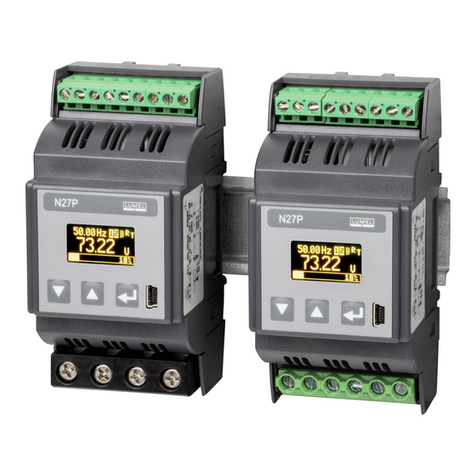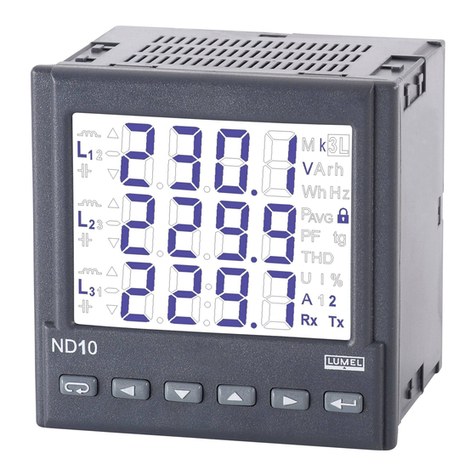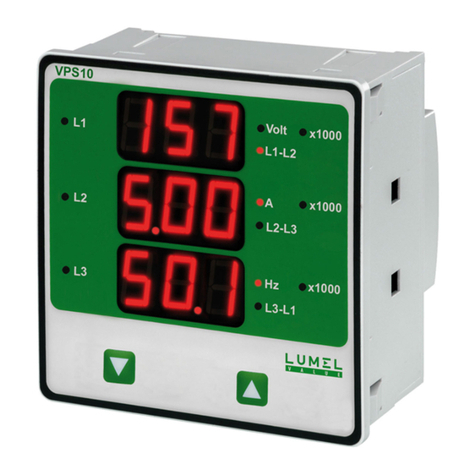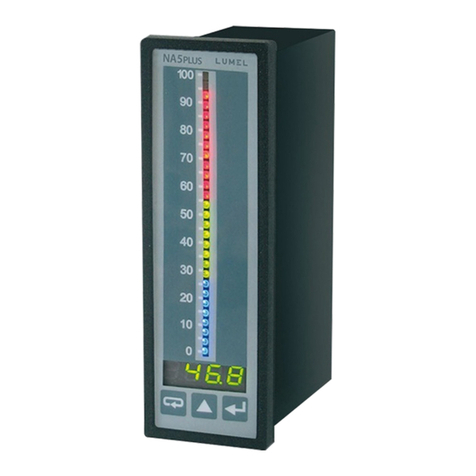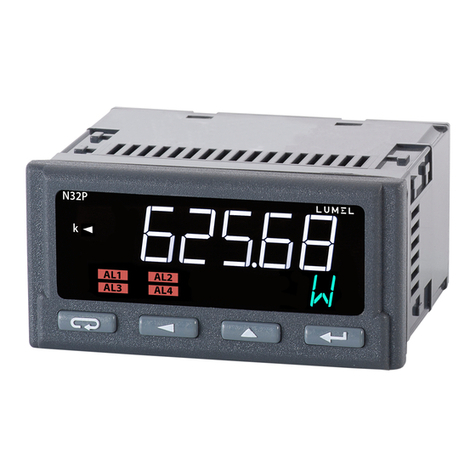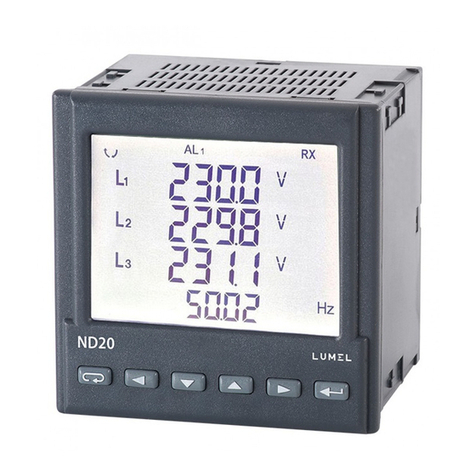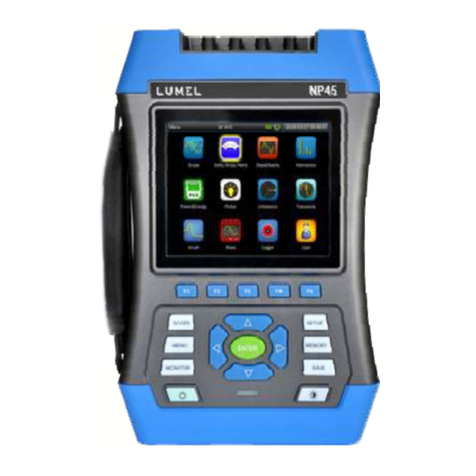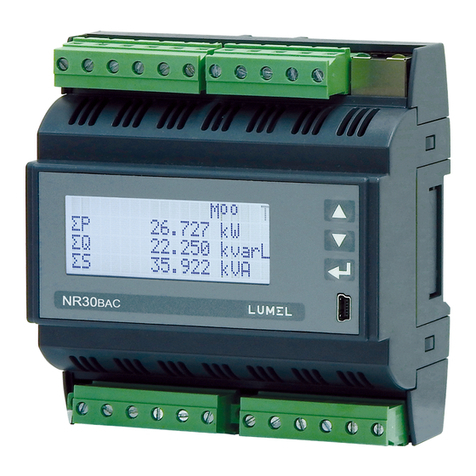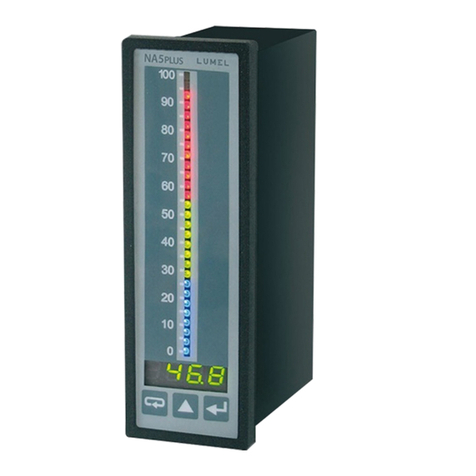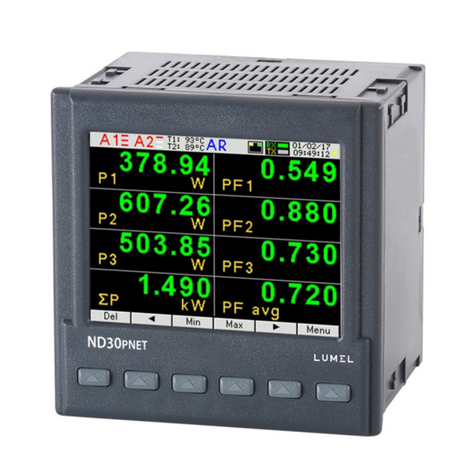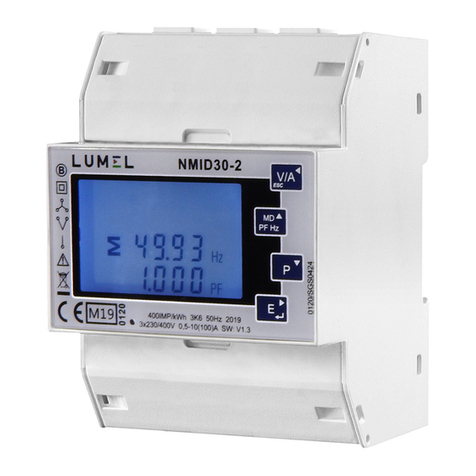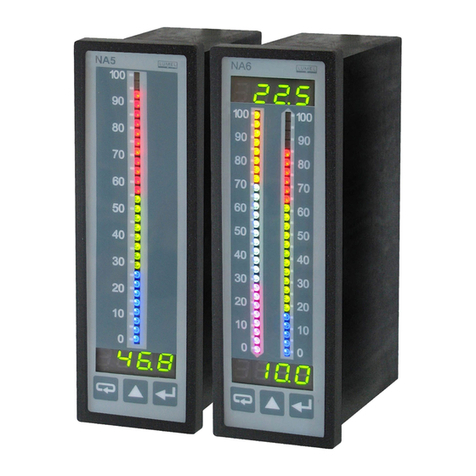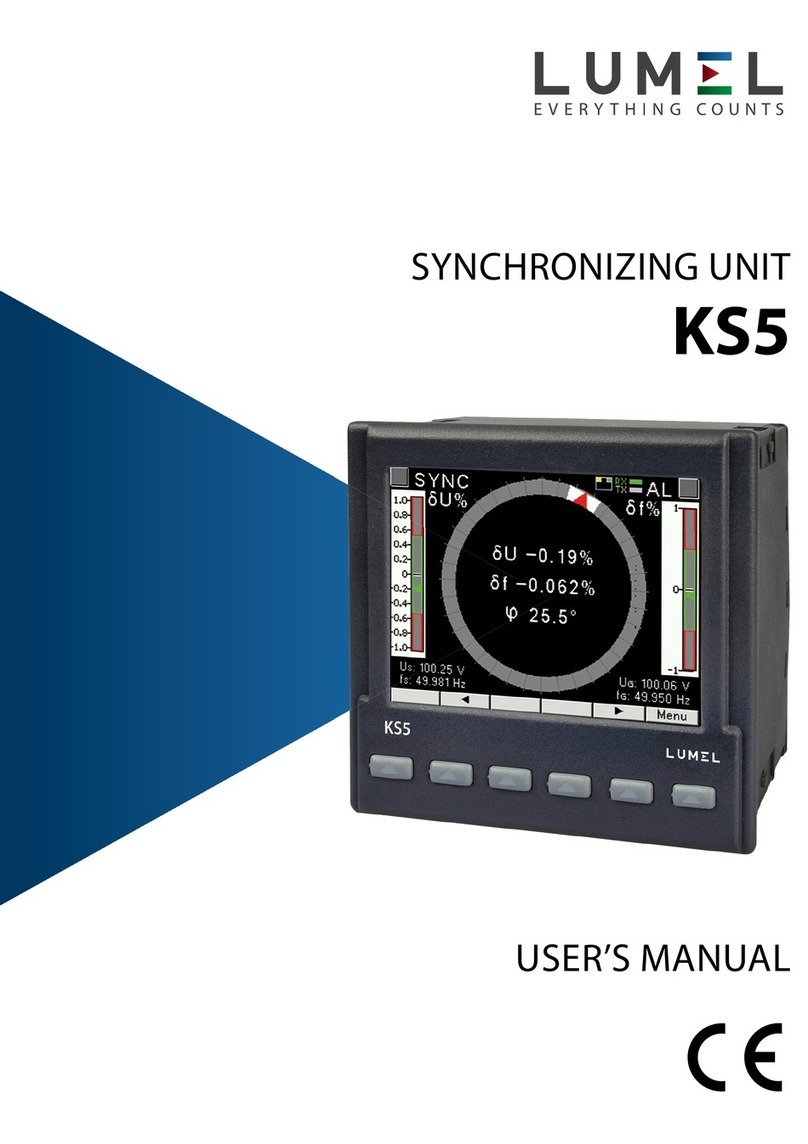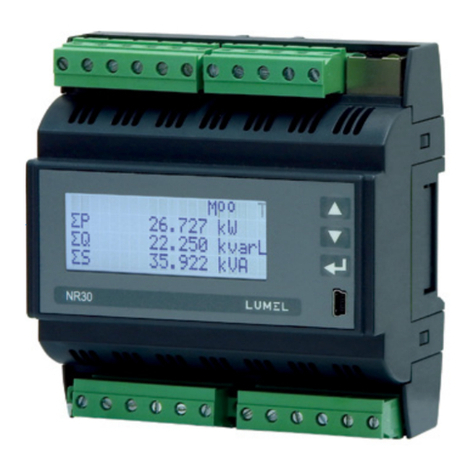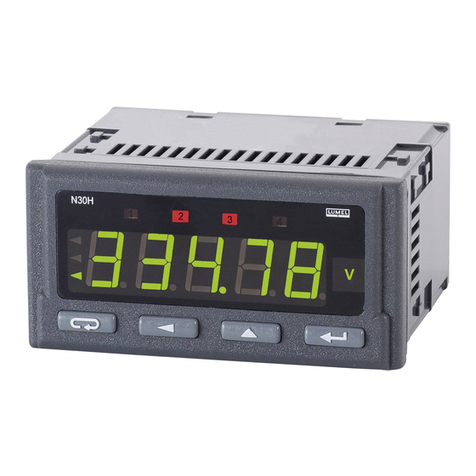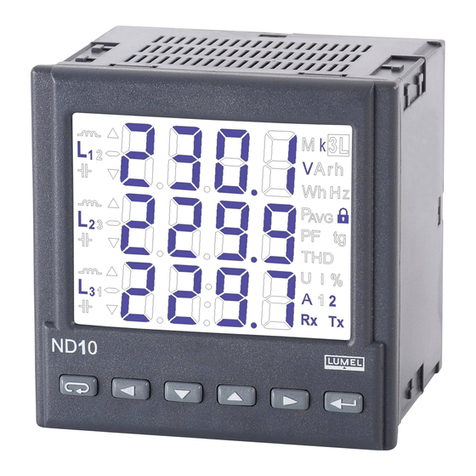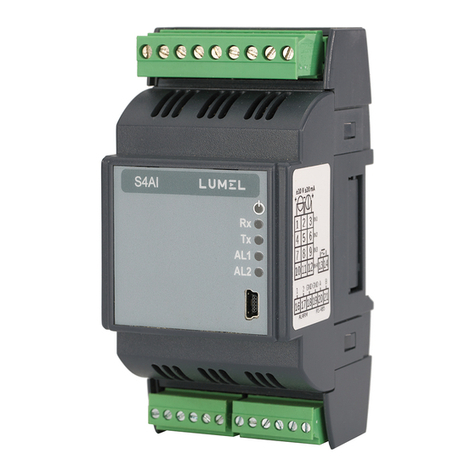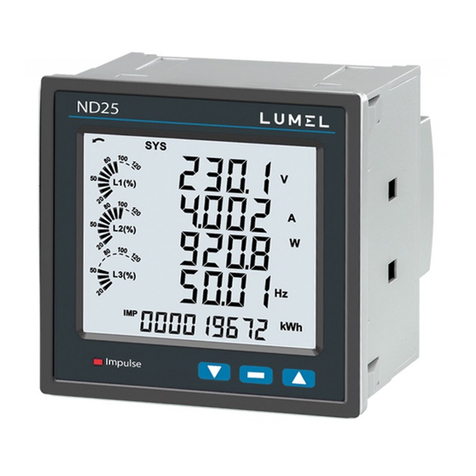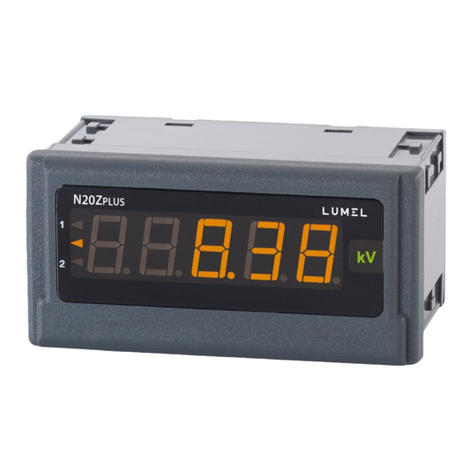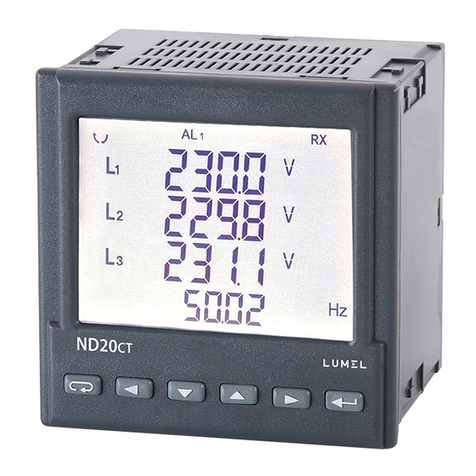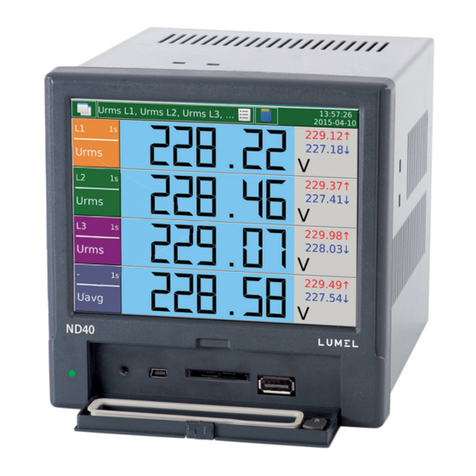5
1. APPLICATION
NA3 series meters with a multicoloured bargraph have an universal input destined
to measure temperature, resistance, voltage from shunts, standard signals, d.c.
voltage and d.c. current.
NA3 meters can optionally have a continuous analogue output, relays, OC type
(Open Collector) and digital RS-485 outputs.
They can find application in various industrial fields, e.g. food industry, intermediate
pumping stations, sewage treatment plants, chemical industry, weather stations,
breweries.
The NA3 meter is made in the version:
with a 4-digit LED readout field (digit height: 7 mm) and a multicolour
bargraph.
The type choice is made in the execution code.
They are programmed by means of the keyboard and through RS-485. Meters only
with the bargraph can be programmed through RS-485.
NA3 meters realise following functions:
– measurement of the input quantity and displaying it on the display and/or the
bargraph,
– evaluation of the input signal into indication on the base of the individual linear
characteristic,
– programming of the colour and bargraph resolutions,
– signalling of alarm value setting exceeding,
– recording of the measured signal in programmed time segments,
– storage of maximal and minimal values,
– programming of the indication resolution,
– programming of the measurement averaging time,
– locking of the parameter introduction by means of a password,
– conversion of the measured quantity into a voltage or current output signal,
– service of the RS-485 interface in MODBUS protocol, both in ASCII and RTU
mode.
Fig.1. View of the NA3 meter.












